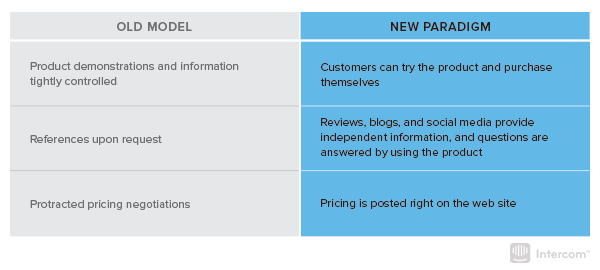Time for sales to call a truce with customers
- Fahad H

- May 19, 2014
- 4 min read
Remember a time, in the not too distant past, when people bought software without trying it first? It’s a time that is remembered fondly by legions of sales people, maybe not so much by their customers.
The traditional model of enterprise software sales went like this. Businesses would spend their time gathering requirements, writing and sending out RFPs, and then sitting through numerous well scripted demos from potential vendors. At the end of the process, which could easily take six months to a year, they crossed their fingers and hoped it would work as promised.
The art of negotiation
In this scenario, the power was in the hands of the sales rep and the vendor, and that power was leveraged to ensure the customer signed on the dotted line. Sales reps were taught how to negotiate with three power cards:
1. Product demonstrations and information
Demos wouldn’t be provided without customers at least committing to a discovery call, where the sales rep could gather information which would be useful later in the sales process.
2. Customer references
Getting to talk to an existing customer was a big deal. After all the rep had to find a customer who was willing to give up their time. What was the potential customer going to give the sales rep in return? An assurance that he or she was the preferred vendor?
3. Pricing
In this model of software sales the price was something that was always up for a negotiation. And as the end of the quarter or financial year approach those negotiations would ebb and flow with the balance of power tipping back and forth between vendor and buyer. Certainly the price per user per month would never be published on a website or anywhere else.
Sales and the art of war
All software companies employed an army of sales reps to get in front of as many customers as possible and leverage their Rolodex. These sales teams tended to use a lot of military analogies. They were taught that sales was a battle, and that they had to win customers at all costs. The troops were rallied at annual sales conferences and kick off events.
With big ticket deals on the table there were times sales reps were sent on planes to sit in the lobby waiting for the customer to walk by and beg for a signature. No wonder sales reps were perceived negatively. What’s even more surprising is that lots of software companies are still selling this way.
At the turn of the century the world of software changed fundamentally with the move to web-based delivery. Rather unexpectedly, when the iPhone was released in 2007, it proved to be a tipping point which really shifted the balance of power.
The tipping point
With corporate IT departments still pushing Blackberrys, employees started buying their own phones and bringing them to work. As more and more people bought iPhones, third party apps were introduced and rapidly became popular. People felt empowered and started to purchase apps to help them perform better in their jobs. The need for a sales rep diminished: other users reviews could be read in the app store, free trial periods were common, and to complete the purchase all that was needed was a credit card.
All these changes have forced the modern sales rep to re-evaluate the traditional three power cards:

It might be tempting to conclude from all this that software vendors no longer need sales reps. Some might even say there is no need for a sales rep anymore because they made such a bad name for themselves.
But look at the success of Apple itself and you’ll soon see that’s a ridiculous conclusion. Apple, relies heavily on stores where you talk with a real person and it controls the entire experience.
In my (unscientific) study where I asked people, “what is the best sale you have ever experienced?” almost everyone says an Apple store. Not only does Apple have nice, well organised stores, but it employs retail staff who deeply understand the product and are not just trying to hustle you into a sale.
People learn better through human-to-human communication and tend to buy from people they like. That’s why I believe a sales rep will always have a role to play because people like to know there is someone behind the product they are trusting to help them complete their jobs. Also, customers want to learn best practices and come up to speed quickly without having to spend a lot of time learning on their own. But while the sales person is still needed, taking an old-school approach to your SaaS sales strategy just isn’t going to cut it.
The new sales paradigm
When building and scaling your sales team, remember these are the new power cards they’ll need to thrive:
1. Know the product
There’s lots of information on the web so the rep has to be able to provide deep information on the product that can’t be found online
2. Understand how it helps customers succeed
The salesperson has to provide best practice advice and guide the customer through the initial stages of usage
3. Help buyers justify the cost
The rep should share business cases and find others who might be interested within the organization. Help connect the dots.
4. Project manage the sale
The sales pro has to act as a planner and remind the customer of milestones
It’s time to stop calling sales reps “frontline soldiers” and having them cold-call all day. Those days are gone, along with the door-to-door salesmen. It is time to declare peace between the sales person and their customer.








Comments